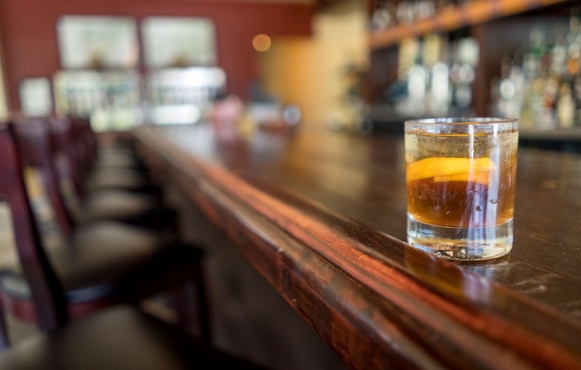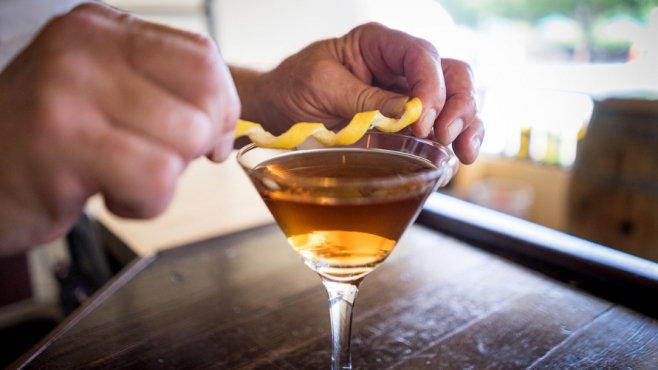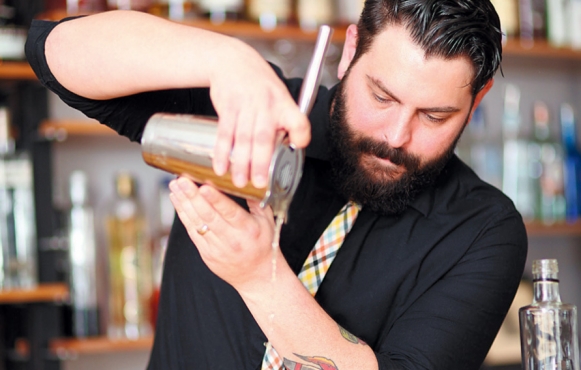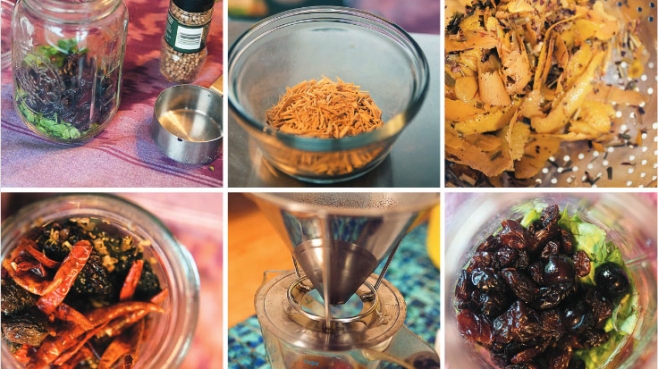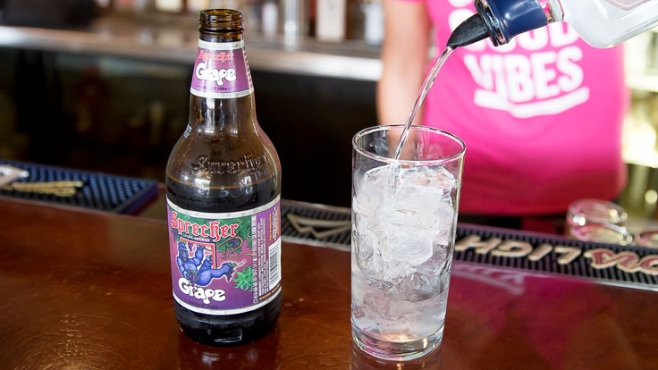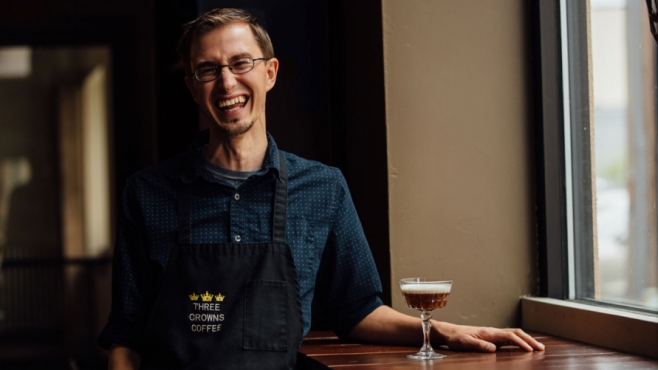Tapastrie bartender brings back the craft of classic cocktails
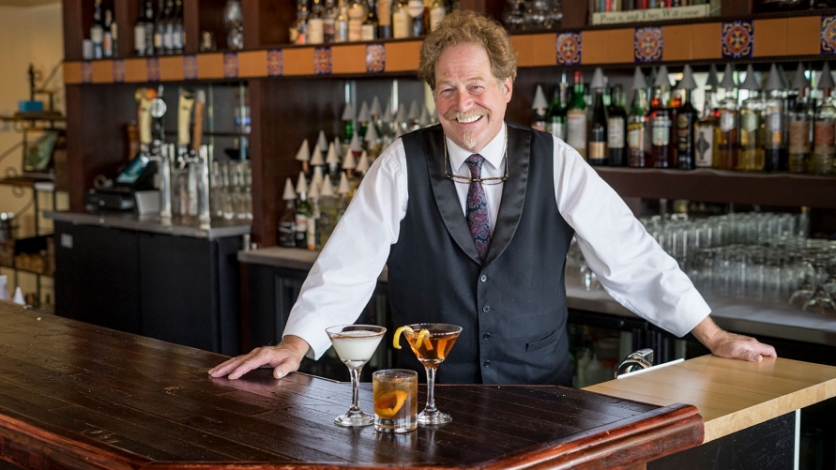
Tapastrie bartender Wally Ruston is all about flavor and balance. Hence his love for drinks of America’s golden age of cocktails, beginning around the late 19th century; this period, he says, is his raison d’être as a bartender.
Wally Ruston does not care too much for vodka.
That might sound a little weird, since he’s a bartender … or in today’s food scene, a mixologist. But Ruston is the epitome of old school, so let’s stick with “bartender.”
He isn’t too enamored of vodka— “the Hamburger Helper of booze,” he calls it.
And let’s be honest, vodka is kind of the tofu of liquor, taking on the flavor of whatever you mix it with. Therein lies the basis for Ruston’s tepid feeling toward vodka. He’s all about flavor, he says, and balance, when it comes to mixed drinks. Hence his love for drinks of America’s golden age of cocktails, beginning around the late 19th century; this period, he says, is his raison d’être as a bartender.
Around 2003, Ruston, who tends bar at Tapastrie in South Bend, IN, was working at the now-closed University Club at the University of Notre Dame. His clientele consisted of a not-insubstantial number of older priests, many of whom enjoyed the so-called classic drinks such as Manhattans, Stingers and Old-Fashioneds, and they enjoyed them made—please pardon the pun—the old-fashioned way.
That attitude informs Ruston’s philosophy now.
“If you want a Manhattan, you should get a Manhattan, not someone’s interpretation of a Manhattan,” he says, hastening to add that there’s nothing wrong with experimentation.
He says if you create a twist on a classic cocktail, then take the proper credit for inventing a new drink and give it a name (so maybe there’s still hope for a “Ruston Nail?”). That’s why he loves the trend over the past decade or so of returning to the classics, “brushing vodka and Diet Coke aside for something a little more culinary.”
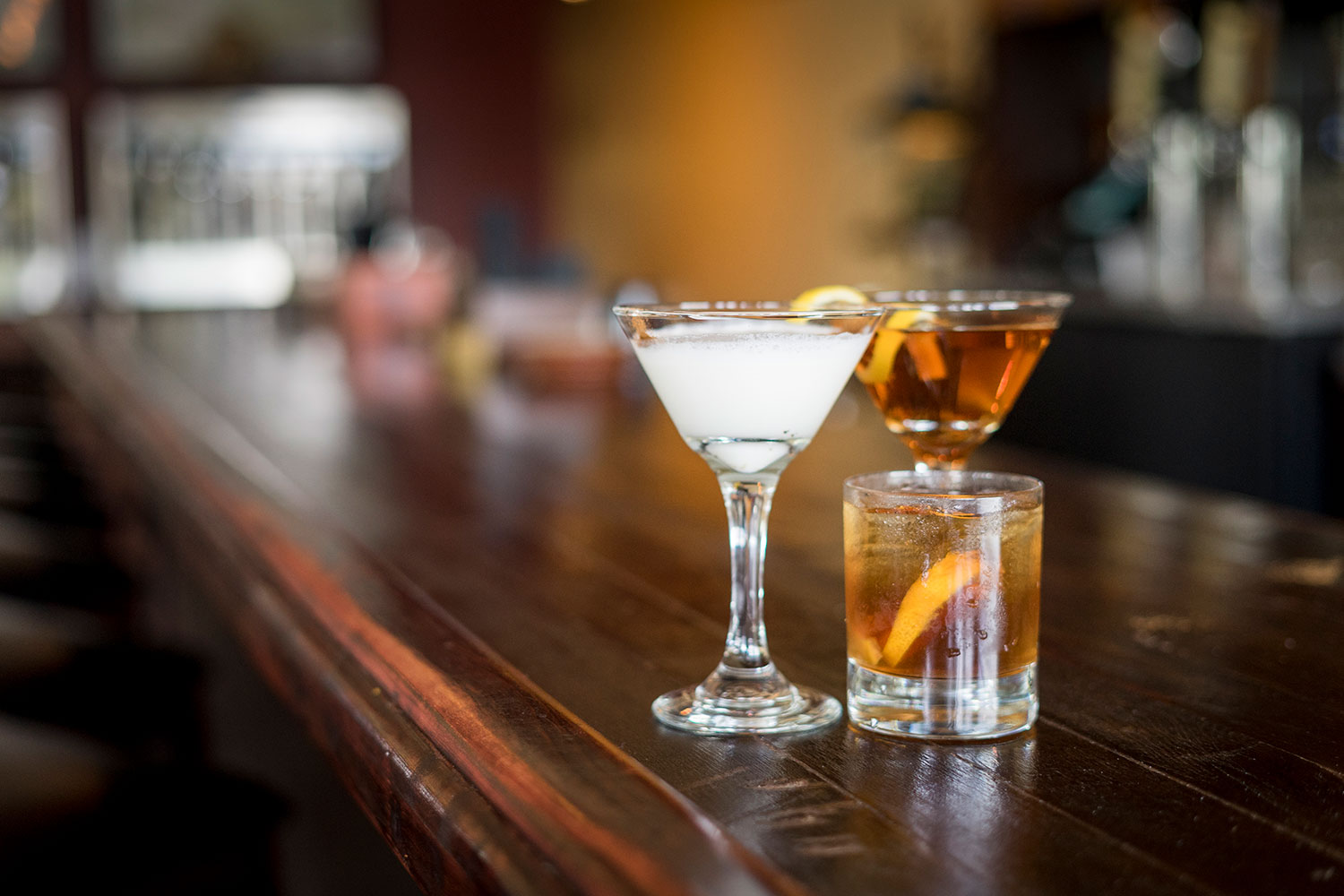
Classic cocktails are classic for a reason, says bartender Wally Ruston: They were just perfect from the start. Clockwise, from left, the Alexander, the Sazerac and the Old-Fashioned. Photo by Levon Kotanko
When Ruston got interested in these old cocktails, ever the professional, he began collecting old cocktail books and reading as much history on the subject as he could. Inevitably, he ran across the work of Jerry Thomas, who is considered one of the great bartenders of history and authored the extensively titled How To Mix Drinks, or, the Bon Vivant’s Companion, Containing Clear and Reliable Directions for mixing all the Beverages Used in the United States, Together With the Most Popular British, French, German, Italian, Russian, and Spanish Recipes, Embracing Punches, Juleps, Cobblers, Etc, Etc, Etc in Endless Variety. (In the time it took to type that book title, Ruston could have made me an Old-Fashioned or two). Thomas’s book was published in 1862 and is generally considered the oldest published cocktail manual, the wellspring from which all American bartending and mixology flows.
What stood out most to Ruston in the tome was the craft of these old drinks, which were made in a time when sugar was not easily available. As a result, Ruston says, the craft of bartending was a balancing act of simple ingredients mixed in the proper measures.
“What they were drinking was really well-made,” Ruston says. “Sugar was for balancing things, like citrus and bitters. That’s what I do ... so you can taste what’s in it,” not just one ingredient.
Ruston says it isn’t hard to mix a drink well—“If you can make a sandwich, you can make a drink”—and he offers a few tips (as well as some strong opinions) for doing so.
Old-Fashioneds and other drinks that involve muddling
Tip: Gently press on a citrus rind or mint or whatever, just enough to express the essential oils and flavor compounds. Don’t mash it into a paste.
Opinion: Use a high-percentage rye whiskey, decent, but not top shelf. No Bourbon. “Bourbons are always meant to be sipped by themselves.”
Balance, balance, balance
Tip: Know your ingredients. When opening a new bottle of bitters, dash some on your tongue to get a feel for the taste from batch to batch. Too much will make the drink taste off. Go easy on the sugar or simple syrup. And keep your ratios in mind.
Opinion: The Rusty Nail is “so broadly abused and chronically made wrong.” The ratio should be 3:1 Scotch to Drambuie, not half and half. Again, use decent Scotch, but not the best.
Simplify, simplify
Tip: Simplify.
Opinion: Margaritas are terribly maligned, he says. Never use sweet and sour mix—“throw that stuff out.” Mix 1½ ounces decent tequila, 1 ounce of orange liqueur (Ruston prefers Cointreau, but Tattersall works) and ½ to ¾ ounce lime juice; shake with ice and pour into a salt-rimmed glass. That’s it.
Finally, go easy on the sugar, he says. And, lest you think he’s too harsh on vodka, Ruston does keep a potato vodka behind the bar and has a suggestion to put the spirit to its best use: Keep it in the freezer and drink it straight as a palate cleanser with small plates featuring strong flavors, such as blini with black bread, crème fraîche, caviar and garlic. After all, it’s about balance.
For further reading
If you’d like to learn more about classic cocktails, the differences between the same brands of liquor depending on where you live and the history of drinking, try these books:
Imbibe!: From Absinthe Cocktail to Whiskey Smash, a Salute in Stories and Drinks to “Professor” Jerry Thomas, Pioneer of the American Bar, Updated and Revised Edition, by David Wondrich (Perigee, 2015)
How to Mix Drinks, or, the Bon Vivant’s Companion, Jerry Thomas (Dick & Fitzgerald, 1862)
Shrubs: An Old-Fashioned Drink for Modern Times, Michael Dietsch (W.W. Norton, 2014)
How to Drink, Victoria Moore (Andrews McMeel, 2010)


